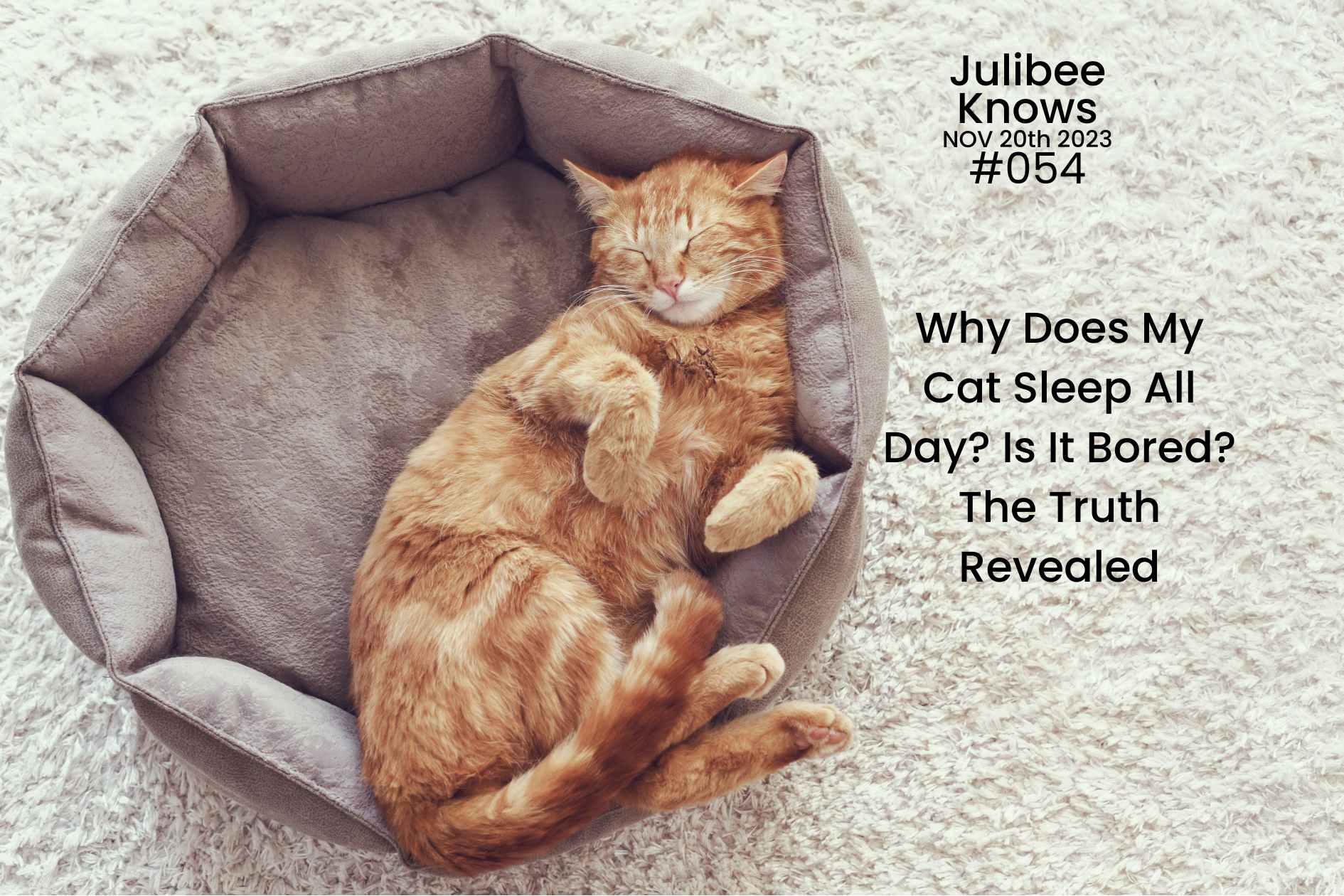
Understanding Cat Stress: How to Recognize, Manage, and Reduce Cat Stress 2023
understanding and addressing feline stress is crucial for the well-being and longevity of your beloved feline friend. By recognizing stressors, monitoring your cat's behavior, and taking proactive measures to reduce stress, you can create a...
Inside this Article:
When it comes to feline stress, most cat owners have heard of it, but often their understanding remains superficial. Many believe that cat stress merely manifests as upset stomachs, hiding in fear, or heavy breathing – seemingly minor issues. However, feline stress is far from simple. In severe cases, it can directly impact a cat's lifespan. Moreover, sometimes, you might not even know what triggers stress in your cat or when it might strike.
Today, we're going to delve deep into the topic of feline stress, covering everything from stressors to its effects and potential solutions. This article might be a bit lengthy, but we urge pet parents to read it carefully. If you're not in the mood, you can always bookmark it. You never know when you might need to educate someone else about it.

I. What Is Stress?
Stressors are the stimuli that trigger this stress response.
Here's a relatable example: When you're taking a shower, and suddenly an enormous spider or cockroach jumps onto you, even the toughest person might jump in fear. This is because, at that moment, your body's natural coping mechanisms couldn't handle the stressor – a spider or cockroach. It caused your adrenaline to skyrocket, your body to lose control, fear to rise, and could even result in illness due to the shock.
Now, can you see how stress works? Cats are no different, and in many cases, they're even more susceptible to stress than humans.
II. Potential Stressors
Defining stressors for cats isn't straightforward because each individual perceives them differently. For instance, something as common as taking a bath isn't stressful for all cats; some even enjoy it. On the other hand, for some cats, a bath equals an attempt to drown them. So, when we discuss stressors, we're generally referring to those that affect most cats. However, remember that it's a reference point:
- Going Outside
- Moving to a New Home
- Bathing
- Social Conflicts Among Cats
- Forcing Cats into Certain Behaviors
- Owners' Sudden and Unexpected Actions
- Encounters with Strangers
- Encounter with Unfamiliar Animals
- Sudden Loud Noises (e.g., fireworks)
Crucial note: Stressors are usually not one-off stimuli; they often persist over time, and their impact can escalate as time passes. It might also be a combination of stressors. For instance, if you have two cats at home that don't get along, but they've been passively avoiding confrontation, it might take only one trigger (often related to resource allocation) to turn them into adversaries.
III. Signs of Cat Stress
Identifying feline stress isn't always evident from external behavior. To evaluate if a cat is stressed, one must simultaneously consider behavioral changes, psychological changes, and physiological changes.
-
Behavioral Changes:
- Freezing in place
- Fleeing
- Hiding
- Piloerection (hair standing on end)
- Hissing
- Aggression (including biting and scratching)
-
Psychological Changes:
- Fear
- Depression
- Anxiety
- Pain
- Desire
- Excitement
-
Physiological Changes:
- Piloerection (again, indicating stress)
- Dilated pupils
- Rapid breathing
- Increased heart rate
- Drooling
Sometimes, a cat may not display obvious behavioral changes, but their physiology and psychology could be subtly hinting at stress. For instance, we had a cat at home who once suffered from psychogenic vomiting due to stress caused by a move. Initially, we didn't notice behavioral changes, but her increased sleep and reduced appetite were indicators of her emotional discomfort.

IV. How Stress Affects a Cat's Physical Health
First and foremost, stress, whether in humans or animals, is closely linked to reduced lifespan. Studies have found that stress can lead to DNA changes, such as telomere shortening, which accelerates aging. Beyond lifespan, stress also impacts the immune system, making cats more susceptible to various diseases. It's sometimes challenging to establish direct causal links between stress and specific illnesses because diseases themselves can induce stress.
- Effects on the Urinary System:
- Increased risk of idiopathic cystitis
- Increased risk of bladder inflammation
- Inappropriate urination behavior
There are reports suggesting that stress can worsen clinical symptoms in cats with idiopathic cystitis. Stress is believed to alter bladder permeability, exacerbating the condition. Additionally, some research suggests that stress in cats can lead to various other behavioral issues such as vomiting, anorexia, and increased sleep.
-
Effects on the Gastrointestinal System:
- Gastroenteritis
- Gastric ulcers
- Gastroesophageal reflux
- Vomiting
- Intermittent diarrhea
- Reduced appetite
- Defecating outside the litter box
-
Effects on the Reproductive System:
- Poor fetal development in pregnant cats
- Disturbances in pituitary and ovarian function
- Miscarriages
-
Effects on the Immune System:
- Increased susceptibility to infectious diseases
- Increased risk of upper respiratory tract infections
Because stress can alter cortisol secretion by the adrenal glands, it can suppress the immune system's activity. Additionally, stress can inhibit the production of immunoglobulin IgA, increasing the likelihood of upper respiratory tract infections.
-
May Lead to Repetitive Compulsive Behaviors:
- Excessive grooming, often to the point of self-injury
- But! Excessive grooming can also be linked to medical conditions.
-
Impact on Genetics:
- Stress may result in overly active behavioral issues in the offspring of stressed pregnant cats. This occurs because stress can affect the binding sites of corticotropin-releasing hormone (CRH) genes in the central nervous system.
V. Other Effects of Stress on Cats
-
Impact on Psychological Well-being: Depending on the intensity, duration, and individual perception of the stressor, cats may respond with either passive or hyperactive coping mechanisms, leading to anxiety or depression.
-
Impact on Social Behavior: Stress can cause cats to respond aggressively, not only towards other cats but also towards humans, affecting human-cat relationships.
VI. Coping with Cat Stress
-
Improve the Environment: Strive to provide a stable living environment and minimize stressors as much as possible. Avoid high-intensity stressors and consider pheromone therapy as an early intervention.
-
Offer Hideaways or Safe Spaces: Providing places where cats can escape and feel secure is vital. For example, you can place baskets on top of cupboards or create escape routes. Avoid disturbing cats when they are in stress mode, especially when they've just moved into a new home.
-
Be Patient and Supportive: If your cat experiences stress-induced inappropriate urination, avoid punishment. It will only increase anxiety, conflict, and erosion of trust between you and your cat.
-
Seek Prompt Veterinary Care: If your cat frequently experiences illnesses, consult your vet.
-
Address Behavioral Issues Promptly: Timely correction of behavioral issues can help alleviate stress. Socialization in cats should be initiated early to reduce stressors.
- If you need to take your cat outside, be sure to consult a veterinarian, and pay attention to using a pet carrier bag with safety measures such as shading and safety buckles.

In conclusion, understanding and addressing feline stress is crucial for the well-being and longevity of your beloved feline friend. By recognizing stressors, monitoring your cat's behavior, and taking proactive measures to reduce stress, you can create a happier and healthier environment for your pet. Remember, a stress-free cat is a happy cat.

219 comments
jaWLYJpQClr
ALJgcPuek
IGdNbygBhEpViz
UzpXZhtiwHfd
goYiuHjnIOkbFMZ
vDHNPsuU